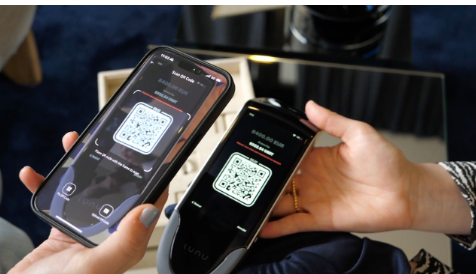Another Great Leap Forward for the Annals of History – Crypto Payments & Our Brave New World

The evolution of payment methods reflects humanity’s continuous pursuit of efficiency, security, and convenience in trade.
From the barter system, where goods were directly exchanged, we progressed to commodity money, utilizing items with intrinsic value like cattle or grains. The discovery of precious metals marked a significant advancement, providing durability and universal recognition, which led to the creation of standardized metal coins.
Paper money and banknotes revolutionized trade by introducing lightweight and easily transportable forms of currency, eventually giving rise to the gold standard, which linked money to a fixed amount of gold. The shift to fiat money allowed greater economic flexibility and control, but with the advent of technology, electronic money emerged, enabling rapid, global transactions.
Cryptocurrencies represent the latest stage in this journey – a natural development arising from growing security, speed, and price-related concerns regarding the state of the current digital economy.
While there are arguments that speak to the teething problems of the blockchain, notably in citing cross-chain bridge vulnerabilities, centralized exchange failures, and a lack of industry oversight, these are slowly becoming less and less relevant to an evolved, well-regulated, and efficient replacement for a dying payments industry.
At LUNU, we’re proud to be on the precipice of this change.
The State of Payments
With over 600 million crypto users globally and more than $2 trillion in crypto capital, the cryptocurrency market is robust and expanding. But how many of these users are interested in payments over pure speculative holding?
The global volume of crypto payments has reached an astounding $10 trillion, with 76% of retailers planning to accept either cryptocurrency or stablecoin payments within the next two years. We believe that in 2024, three key market drivers are propelling this growth.
Crypto ETFs
Firstly, the introduction of Bitcoin ETFs is making cryptocurrency investments more accessible to traditional investors, culminating in the long-apparent interest from institutional investors such as BNP Paribas, which has officially purchased shares in BlackRock’s spot Bitcoin ETF.
JPMorgan Chase, for example, has recently created a debt instrument that provides investors with exposure to cryptocurrencies through companies heavily invested in Bitcoin and other digital assets. Goldman Sachs has also reopened its cryptocurrency trading desk, providing liquidity and trading services for cryptocurrencies such as Bitcoin.
Regulatory Improvements
Next, there’s an improving regulatory climate. Most notably, the Markets in Crypto-Assets (MiCA) regulation in the EU is creating a comprehensive framework to ensure consumer protection and market integrity.
Such regulatory movements are key for companies such as Visa, which has recently enabled direct cryptocurrency transactions on its platform, allowing users to convert and spend their crypto at over 70 million merchants worldwide.
Similarly, Mastercard has partnered with crypto exchange Bakkt to allow its network of banks and merchants to integrate cryptocurrency into their offerings, including Bitcoin rewards.
Moreover, with an improving regulatory landscape, major companies across various industries are adopting crypto payments, including luxury brands like Farfetch, Gucci, Balenciaga, and Hublot; tech giants such as Microsoft and Alibaba; and online platforms like Travala.com, Etsy, and PayPal.
Improving Technologies to Facilitate Crypto Payments
Another significant factor driving the adoption of cryptocurrency payments is the improvement in technologies designed to facilitate these transactions. In other words, the user experience when it comes to paying in crypto.
Our payment solutions, for example, enable merchants to accept crypto payments both online and in-store with POS terminals and new, versatile online widgets. This has been a game-changer for e-commerce and brick-and-mortar retail outlets.
Solutions such as ours make crypto transactions as straightforward as using a credit card. This is crucial in making crypto payments more practical and attractive for everyday use.
These factors and more are leading to crypto being used more often as a means of payment rather than simply as an investment instrument. As such, crypto is well on its way to being rightfully considered “money” in the full sense of the word. At LUNU, we proudly stand at the vanguard of this shift.
How Do Crypto Payments Work?
For those unfamiliar with crypto payments, they aren’t just cheaper and faster; the user experience is becoming increasingly comparable to the familiar ease of fiat systems. Let’s take our payment processing solution as an example.
- Initiating the Purchase: A customer decides to make a purchase worth €100 using cryptocurrency. The customer uses a Lunu Widget, Lunu Terminal, or Pay By Link to start the payment process.
- Choosing the Payment Method: The customer selects the desired cryptocurrency to complete the transaction. The exact price in cryptocurrency is displayed to the customer, who then scans the provided QR code to proceed with the payment.
- Processing the Payment: The payment information is sent to us for processing. Our system instantly converts the cryptocurrency into fiat currency, ensuring that the value remains equivalent to €100.
- Integration with Liquidity Providers: To facilitate the conversion, we engage with liquidity providers. This step ensures there is sufficient liquidity for the transaction, allowing for a smooth and timely conversion from cryptocurrency to fiat.
- Completing the Transaction: Once converted, the fiat money is prepared and transferred to the retailer’s bank account. The business receives the payment in fiat currency, making the transaction straightforward and familiar for them.
Final Thoughts
An important aspect of any contender for the next global payments system is that it can’t be an end-cap.
Flexibility and the ability to adapt to developing consumer needs are paramount. This is another area where crypto payments excel.
For example, with Lunu, customers can automatically convert their fiat currency into cryptocurrency and then use it to pay businesses, allowing them to leverage the benefits of crypto payments even if they start with fiat money.
Additionally, systems such as ours offer transaction flows that consider rewards and refunds, ensuring that both customers and businesses can handle post-purchase activities efficiently.
Much as we couldn’t have imagined what a ‘distributed digital ledger’ would look like in the midst of the digital payments era, there’s no telling what will come next.
What is clear, however, is that the blockchain is on its way to becoming the world’s default payment network, and it’s exciting.
If you’re interested in learning more about LUNU, head over to our site.
Author: Vadim Grigoryan CMO Lunu






